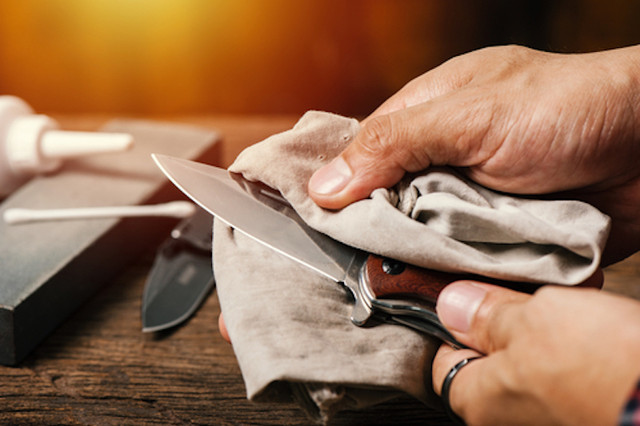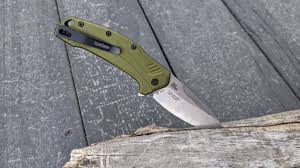How to Clean a Pocket Knife Without Damaging It: A Complete Guide
Updated: 22 Oct 2024
85
1. Why Cleaning Your Pocket Knife Is Important
how to clean a pocket knife, Pocket knives are exposed to dirt, moisture, and oils over time, especially when used regularly. Without proper care, these contaminants can lead to corrosion, dull blades, sticky mechanisms, or even cause the knife to jam.
Here are the key benefits of keeping your knife clean:
- Prevents Rust and Corrosion: Moisture can accumulate on the blade, leading to rust.
- Ensures Smooth Operation: Dirt or debris can hinder the smooth opening and closing of the knife.
- Extends the Knife’s Lifespan: Routine maintenance ensures the blade and handle stay in good condition.
- Reduces Risk of Injury: A clean knife ensures that components function as intended, preventing accidents caused by stuck blades.
2. Tools and Materials You’ll Need
Having the right tools and materials makes cleaning your pocket knife easier and safer. Here’s what you’ll need:
- Soft Cloth or Microfiber Towel: For wiping the blade and handle.
- Warm Water and Mild Dish Soap: Helps dissolve oils and dirt without corroding the metal.
- Soft-Bristled Brush or Old Toothbrush: Ideal for scrubbing without scratching.
- Cotton Swabs: Useful for cleaning tight spaces or pivots.
- Rubbing Alcohol (Optional): Helps with disinfection and evaporates quickly.
- Knife Oil or Lubricant: Prevents rust and ensures smooth operation.
- Multi-Tool with a Torx Driver (Optional): To disassemble knives with screws, if necessary.
3. Step-by-Step Process for Cleaning a Pocket Knife

Below is a straightforward, step-by-step process to clean your pocket knife effectively:
Step 1: Disassemble the Knife (If Applicable)
- If your knife is held together by screws (e.g., some folding knives), consider disassembling it.
- Use the appropriate screwdriver or Torx bit to avoid stripping the screws.
Note: If you’re not comfortable taking your knife apart, proceed with the cleaning without disassembling it.
Step 2: Rinse with Warm Soapy Water
- Submerge the knife (or just the blade) in warm, soapy water for a few minutes.
- This helps loosen any dirt, grease, or residue on the blade and handle.
Step 3: Scrub the Knife with a Soft Brush
- Use a soft-bristled brush to gently scrub all parts of the knife, paying special attention to the blade’s edge and hinge areas.
- For tough spots, dip a cotton swab in soapy water and target hard-to-reach areas.
Step 4: Rinse and Dry the Knife Thoroughly
- Rinse off the soap with clean water and immediately dry the knife with a soft cloth or microfiber towel.
- Make sure to dry the handle, blade, and pivot points to prevent rust formation.
4. How to Remove Rust from a Pocket Knife

If your knife has rust spots, here’s how you can safely remove them:
- Soak the Knife Blade in Vinegar: Submerge the rusty portion in vinegar for 30 minutes to loosen the rust.
- Scrub with a Soft Brush or Steel Wool: Gently scrub the rusted area in a circular motion. Avoid using harsh abrasives that could scratch the blade.
- Rinse and Dry: Rinse with warm water and dry thoroughly to prevent further rusting.
- Apply Oil: Once the rust is removed, apply a light coat of oil to protect the blade from moisture.
5. Proper Lubrication: Why and How to Oil a Pocket Knife
Lubrication is an essential step to keep the moving parts of your pocket knife working smoothly. After cleaning, follow these steps to oil your knife:
- Select the Right Oil: Use a light knife lubricant such as mineral oil or specialized knife oil. Avoid heavy oils that could attract dirt.
- Apply a Few Drops to the Pivot Point: Place a drop or two on the hinge to ensure smooth blade movement.
- Spread the Oil Evenly: Open and close the knife a few times to distribute the oil.
- Wipe Off Excess Oil: Use a cloth to remove any extra oil to avoid sticky residue.
6. How to Clean Specific Types of Pocket Knives

Different types of knives may require slight variations in cleaning:
- Folding Knives: Focus on the pivot area since dirt often accumulates there.
- Swiss Army Knives: Clean each tool individually and ensure all joints are well-lubricated.
- Multi-Tools with Screwdrivers or Scissors: Pay attention to additional components, as they can get stuck with grime.
7. Common Mistakes to Avoid When Cleaning a Pocket Knife
To avoid damaging your knife during the cleaning process, be mindful of these common mistakes:
- Using Harsh Chemicals: Avoid bleach or harsh detergents that could corrode metal surfaces.
- Not Drying Properly: Moisture left on the blade or inside the pivot area can lead to rust.
- Skipping Lubrication: Without lubrication, the blade may not open or close smoothly, increasing wear and tear.
- Over-Tightening Screws: If you disassemble the knife, avoid over-tightening the screws, as this can affect blade movement.
8. How Often Should You Clean Your Pocket Knife?
The frequency of cleaning depends on how often and in what conditions you use the knife.
- Everyday Carry (EDC) Knives: Clean and lubricate every few weeks to keep them in optimal condition.
- Outdoor or Camping Knives: Clean after every use, especially if exposed to dirt, water, or salt.
- Collection Knives: If you have a collection, periodic cleaning and inspection will prevent rust or damage over time.
9. Conclusion: Keep Your Pocket Knife in Peak Condition
Proper cleaning and maintenance ensure your pocket knife remains a reliable tool for years. By following this guide, you can clean your pocket knife without damaging it, extend its lifespan, and prevent common issues such as rust or sticky hinges.
Remember to clean your knife regularly, especially after exposure to dirt or moisture. Use the right tools and materials to avoid scratches or corrosion, and always lubricate moving parts to keep your knife functioning smoothly. With good care, your pocket knife will continue to serve you well, whether for everyday use or outdoor adventures.
FAQs, how to clean a pocket knife
1. Why is it important to clean my pocket knife?
Cleaning your pocket knife is essential to prevent rust, maintain sharpness, and ensure its longevity. A dirty knife may also not function properly, which can pose safety risks.
2. How often should I clean my pocket knife?
It’s recommended to clean your pocket knife after each use, especially if it comes into contact with moisture, dirt, or food. For regular maintenance, a thorough cleaning every few weeks should suffice.
3. What tools do I need to clean my pocket knife?
You’ll need a few items: a small brush (like a toothbrush), mild soap, a soft cloth, a lubricant (knife oil), and optionally, rubbing alcohol for disinfection.
Please Write Your Comments